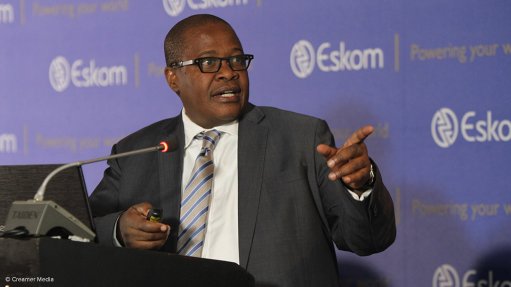
Eskom CEO Brian Molefe
Photo by: Duane Daws
State-owned power utility Eskom has secured 75% of the required funding for its 2016/17 capital expenditure programme after signing the first $500-million, or R7-billion, credit facility with China Development Bank (CDB).
The parastatal and the CDB signed the short-term credit facility agreement at Eskom’s Megawatt Park headquarters on Monday, signalling the first of what Eskom CEO Brian Molefe described as a catalyst partnership for the utility’s many power projects and initiatives.
CFO Anoj Singh said the group required R69-billion in funding for the 2016/17 financial year, of which 75% had been secured to date, with the $500-million credit facility bringing the total secured to R51-billion.
This meant that Eskom could confidently wrap up the year’s funding requirements through market-directed bond issuance and two to three smaller agreements with local banks, the discussions for which were currently under way, he told Engineering News Online on Monday.
“This loan will also aide us in ensuring that we complete the current capital expansion programme and further stabilise Eskom’s liquidity position,” Molefe added.
The agreement is expected to cement Eskom’s relationship with the Chinese bank, with around $5-billion still under negotiation between the utility and CDB.
“We are pleased to see the conclusion of this first agreement with CDB and to lay the platform for future cooperation with our Chinese partners,” he commented.
The CDB had set aside around $20-billion for energy projects in South Africa, Henan province Vice Governor Zhang Weining said.
Eskom requires some R369-billion in working capital over the next five years as part of its capital programme to complete its ambitious Medupi coal-fired power station project, in Limpopo, its Kusile coal-fired power station, in Mpumalanga, and the Ingula pumped storage scheme, on the border between the Free State and KwaZulu-Natal.